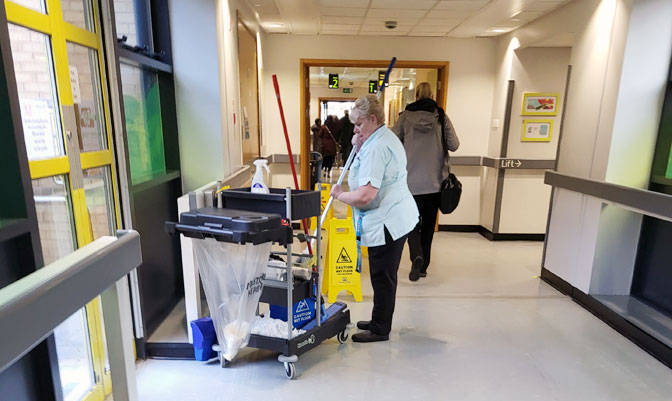
It is not an easy read and the title – EH40/2005 – won’t get any hearts racing. But it is an important Health and Safety Executive (HSE) document, listing all the workplace exposure limits on toxic substances employers are supposed to observe.
There’s a direction of travel on these limits. Over the years, more evidence accumulates on the risks associated with particular chemicals, as more workers join the morbidity and mortality figures. To the non-epidemiologist, that means fall sick or die.
Tightening the standards doesn’t mean we are putting a higher value on a human life. It means we’d under-estimated previously the extent of the harm these chemicals are causing.
Until Brexit, the UK’s workplace exposure limits for chemicals followed European Union standards. Standards start out as health based recommendations from the EC Risk Assessment Committee of the European Chemicals Agency (ECHA).The committee’s recommendations are vulnerable to industry lobbying and business-courting governments. For example, standards on silica and diesel exhaust both fell short of the protective standards recommended by experts, in part due to UK government pressure.
 REACH OUT It’s not just occupational exposure limits where the UK is falling behind. Since Brexit took effect, the EU has introduced eight new restrictions on hazardous substances under REACH; the UK has introduced none under its replacement UK REACH system. The UK is also lagging on hazardous pesticides – 36 now not allowed in the EU are permitted in the UK. More.
REACH OUT It’s not just occupational exposure limits where the UK is falling behind. Since Brexit took effect, the EU has introduced eight new restrictions on hazardous substances under REACH; the UK has introduced none under its replacement UK REACH system. The UK is also lagging on hazardous pesticides – 36 now not allowed in the EU are permitted in the UK. More.
But there has been a consistent move towards more protective limits, and a steady stream of better standards have made their way through the process.
Of 13 new standards introduced across the EU in December 2017 to be ‘transposed’ into national law by 17 January 2020, all were matched in Great Britain (GB). This transposition deadline was after the Brexit ‘no’ vote on 23 June 2016, but came ahead of the European Union (Withdrawal Agreement) Act 2020 taking effect on 31 January 2020.
And that’s the point when everything changed. Three additional batches of more protective chemical standards came – six to be introduced by 21 February 2021, five by 11 July 2021 and a further 14 by 5 April 2024. There was also a phased-in halving of the chromium VI standard introduced in the 2017 batch, for transposition by 2022.
In all, 25 new standards have been introduced since Britain’s final split from the EU in January 2020, all due to take effect by 5 April 2024 or earlier.
Hazards asked HSE, in light of the evidence that convinced the EU the new, more protective, standards were necessary, what action it had taken or planned to take.
HSE responded that the new EU standards “were considered under the GB regime and the decision was taken not to adopt the limits.
“This was for different reasons, for example, for some substances GB already had the same or more stringent limits, or there is little or no known use of the substance in GB,” the HSE spokesperson said.
He added: “We can confirm that the latest version of EH40/2005 was the fourth edition as published in January 2020,” reiterating “there have been no updates to EH40 since that time.”
A Hazards analysis of these 25 standards exposes a drift in Britain from matching or exceeding EU chemical limits, to a state of regulatory stagnation.

In 10 instances the GB standard was weaker – often considerably less protective – than the new EU occupational exposure limit. In 12 cases, the GB and EU limits were the same. In two cases, MDA and diesel engine exhaust, there was no directly comparable standard. In only one case – the lung and bladder carcinogen MbOCA – was there a more protective standard, with the HSE standard half that of the EU standard.
HSE’s spokesperson, defending the regulator’s approach, told Hazards “in GB we have the COSHH Regulations which requires employers to prevent or control workers’ exposure to hazardous substances. Where an exposure limit is set, this must not be exceeded. For carcinogens, mutagens and asthmagens, exposure must be reduced to as low a level as is reasonably practicable (ALARP).”
But the COSHH regulations are based on a European Union chemical agents directive which notes risks “shall be eliminated or reduced to a minimum”, arguably a more exacting standard than HSE’s ALARP.
 WRONG TRACK The Health and Safety Executive has introduced no safer chemical standards since 2020, when Brexit took effect. Britain’s workforce is now less well protected than its EU counterparts from deadly chemicals like benzene, cadmium and arsenic.
WRONG TRACK The Health and Safety Executive has introduced no safer chemical standards since 2020, when Brexit took effect. Britain’s workforce is now less well protected than its EU counterparts from deadly chemicals like benzene, cadmium and arsenic.
What is indisputable, is that as far as workplace exposure limits for chemicals go, nothing has improved in the UK since 2020.
It creates a real concern that HSE, a regulator that claims to be independent and arm’s length from government, is steering a route more closely informed by Conservative ideology than evidence of harm.
Chemical standards out of REACH
Chemical standards out of REACH In February 2024, the Health and Safety Executive (HSE) published the UK REACH work programme for 2023-4, just as the period it covered was drawing to a close.
Britain left the EU chemicals reporting and management system – EU REACH – on 1 January 2021 and established UK REACH as an independent, standalone system for regulating chemicals.
For advocates of chemical safety, it hasn’t been a good move. CHEM Trust, a London-based charity, accuses the HSE of a “striking” level of inaction. “While the EU continues to progress in improving its chemicals regulatory system and controlling harmful chemicals – despite some recent setbacks – the UK is moving more slowly and taking a less protective approach,” it notes.
Its report, Review of UK REACH: 3 years on, states the UK has added no new substances to its authorisation list, compared to five added to the EU’s list. Companies cannot use or manufacture any substance on the list unless given ‘authorisation’ by the regulatory agency.
“Analysis suggests that applications to use substances on the list are more likely to succeed in the UK, such as for chromium trioxide, a carcinogenic chemical linked to increased risk of lung and throat cancer,” CHEM Trust notes. And the workers in Britain using this chromium VI compound are less well protected – HSE’s occupational exposure limit is twice as lax as the EU’s 2022 standard.
The charity adds the UK has yet to adopt a single new ban or restriction on a harmful substance, compared to eight new restrictions on harmful substances adopted in the EU. “So far, it has initiated two restrictions (on harmful substances in tattoo ink and lead in ammunition), compared to 17 initiated by the EU.”
CHEM Trust criticises the Health and Safety Executive (HSE), which it says has “deprioritised” 12 harmful substances on which the EU has either adopted or initiated a restriction. “The reasons it gives show the regulator is setting a higher bar for evidence of harm than the EU before taking action,” it says.
Chloe Alexander, a senior campaigner at CHEM Trust, said: “Three years on from establishing a regulatory system independent of the EU’s, it’s striking how little progress has been made in banning harmful substances and controlling pollution at source.
“The latest UK REACH work programme offers far fewer and weaker protections from hazardous chemicals than its EU equivalent, and at an even slower pace. All of its priorities involve additional preparatory work gathering evidence and analysing regulatory options, which hinder the regulator’s ability to take swift action.
“This is resulting in a second-rate system for regulating chemicals and less protection for people and nature in the UK from harmful chemicals than our European neighbours.”
CHEM Trust says even Britain’s list of “substances of very high concern” has atrophied. The last additions to the UK’s list were made in June 2020. Since then, the European Chemicals Agency has added 26 substances to its equivalent list.
In March 2024, the British Occupational Hygiene Society (BOHS) criticised the UK government’s Rationale for prioritising substances in the UK REACH work programme: 2023 to 2024. It noted: “26 chemicals were under consideration for UK REACH because of serious health concerns leading to regulation in European countries. Of these, only 5 are being acted upon. Of the remaining 16 not determined to be a priority, 10 are toxic to reproduction and 6 are specifically more likely to have other health impacts on women.”
A September 2023 analysis by Pesticide Action Network UK (PAN UK) revealed that UK pesticide restrictions are also falling behind EU standards. It found that 36 pesticides not allowed in the EU are still permitted in the UK. Thirty of these have been banned in the EU since Brexit and the remaining six have been approved for use in the UK since Brexit, but not in the EU.
LIMITLESS
They are there to protect you from everything from drop dead poisons to delayed death carcinogens. But, warns Hazards editor Rory O’Neill, while Europe’s workers have benefited from a succession of tighter chemical standards since Brexit took effect in 2020, not a single more protective workplace exposure limit has been introduced in Britain.
| Contents | |
| • | Introduction |
| • | Reach out |
| • | Table: Hazards analysis |
| • | Wrong track |
| Related stories | |
| • | Chemical standards out of REACH |
| Hazards webpages | |
| • | Chemicals |


